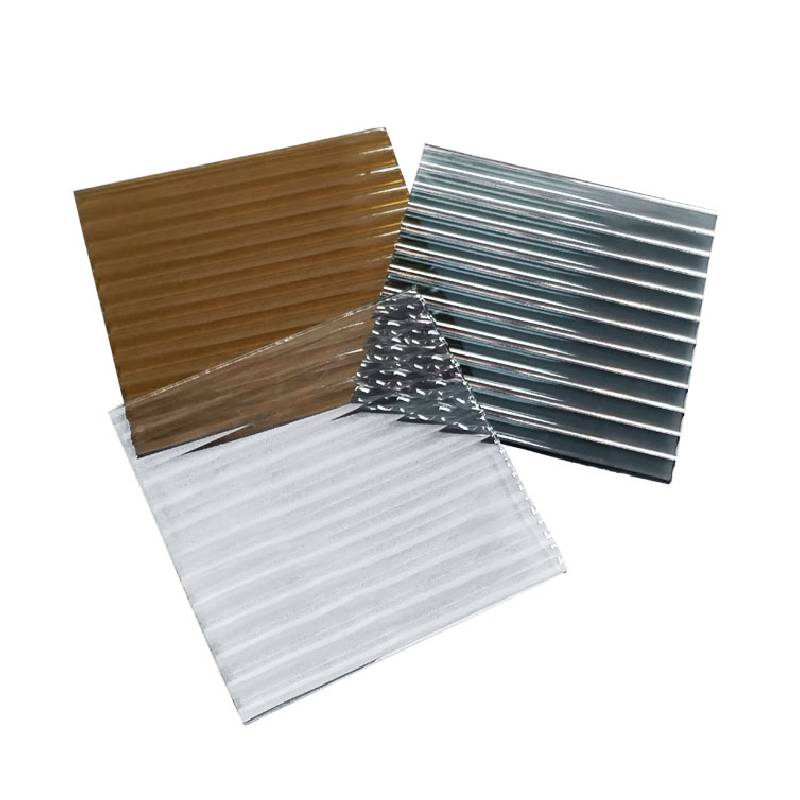Corrugated Glass A Versatile Architectural Element
Corrugated glass is an innovative material that has gained significant popularity in the world of architecture and design. Its unique properties and aesthetic appeal make it a versatile choice for a variety of applications, from facades to interior elements. This article explores the origins of corrugated glass, its benefits, various applications, and future prospects.
The Origins of Corrugated Glass
The history of corrugated glass can be traced back to the mid-20th century, when architects and builders sought new materials that offered both functionality and artistic potential. The process of creating corrugated glass involves molding glass into rippled patterns, which not only enhances its structural integrity but also creates an interesting visual effect. The introduction of this material marked a significant shift in architectural design, allowing for greater creativity and innovation in building projects.
Benefits of Corrugated Glass
One of the most compelling advantages of corrugated glass is its strength. The ridged surface of the glass enhances its durability, making it more resistant to impacts and breaks compared to flat glass. Additionally, corrugated glass provides excellent thermal insulation properties. The air trapped between the corrugations acts as an insulator, reducing heat transfer and leading to energy-efficient buildings.
Another major benefit is its ability to manipulate light. The unique texture of corrugated glass diffuses sunlight, creating a soft and pleasant ambiance in interior spaces. This feature not only enhances the aesthetic appeal of a room but also reduces glare, creating a more comfortable environment. Moreover, corrugated glass can be produced in various levels of translucency, allowing architects to control how much light enters a space.
Applications of Corrugated Glass
corrugated glass
Corrugated glass is a versatile material that can be used in a multitude of applications. One of the most common uses is in building facades. The unique texture adds depth and complexity to the exterior of a building, creating visual interest and setting it apart from conventional designs. This feature is especially beneficial for commercial buildings, where attracting attention and standing out is crucial.
In addition to facades, corrugated glass is also popular for skylights and roofs. Its lightweight nature and strength make it an ideal choice for these applications, allowing for expansive designs that let in natural light while maintaining structural integrity. The ability to create unique shapes and curves with corrugated glass opens up new possibilities for modern architecture, enabling architects to design fluid and dynamic structures.
Inside buildings, corrugated glass is increasingly used for partitions, doors, and windows. It allows for the division of spaces without completely blocking light, maintaining an open and airy feel. This is particularly important in office spaces and commercial settings, where maximizing natural light can boost productivity and well-being.
Future Prospects of Corrugated Glass
As sustainability becomes a focal point in architectural design, the future of corrugated glass looks promising. Innovations in glass recycling and eco-friendly manufacturing processes are making it easier to produce this material with a lower environmental impact. Architects and designers are likely to continue exploring its potential, integrating corrugated glass into more sustainable projects that prioritize energy efficiency and aesthetic beauty.
Furthermore, advancements in technology may lead to new variations of corrugated glass, such as smart glass that can change its opacity or color, providing even greater versatility for architects. This evolution could reshape the way buildings respond to their environment and enhance the overall experience of the occupants.
Conclusion
Corrugated glass is a remarkable material that offers a perfect blend of strength, aesthetic appeal, and versatility. Its applications in architecture are numerous, from striking facades to innovative interior spaces. As the industry continues to evolve, corrugated glass is likely to play an increasingly important role in creating sustainable, light-filled environments that engage and inspire. The future of this glass promises not only to enhance the visual language of architecture but also to contribute to a more sustainable built environment.
 Afrikaans
Afrikaans  Albanian
Albanian  Amharic
Amharic  Arabic
Arabic  Armenian
Armenian  Azerbaijani
Azerbaijani  Basque
Basque  Belarusian
Belarusian  Bengali
Bengali  Bosnian
Bosnian  Bulgarian
Bulgarian  Catalan
Catalan  Cebuano
Cebuano  Corsican
Corsican  Croatian
Croatian  Czech
Czech  Danish
Danish  Dutch
Dutch  English
English  Esperanto
Esperanto  Estonian
Estonian  Finnish
Finnish  French
French  Frisian
Frisian  Galician
Galician  Georgian
Georgian  German
German  Greek
Greek  Gujarati
Gujarati  Haitian Creole
Haitian Creole  hausa
hausa  hawaiian
hawaiian  Hebrew
Hebrew  Hindi
Hindi  Miao
Miao  Hungarian
Hungarian  Icelandic
Icelandic  igbo
igbo  Indonesian
Indonesian  irish
irish  Italian
Italian  Japanese
Japanese  Javanese
Javanese  Kannada
Kannada  kazakh
kazakh  Khmer
Khmer  Rwandese
Rwandese  Korean
Korean  Kurdish
Kurdish  Kyrgyz
Kyrgyz  Lao
Lao  Latin
Latin  Latvian
Latvian  Lithuanian
Lithuanian  Luxembourgish
Luxembourgish  Macedonian
Macedonian  Malgashi
Malgashi  Malay
Malay  Malayalam
Malayalam  Maltese
Maltese  Maori
Maori  Marathi
Marathi  Mongolian
Mongolian  Myanmar
Myanmar  Nepali
Nepali  Norwegian
Norwegian  Norwegian
Norwegian  Occitan
Occitan  Pashto
Pashto  Persian
Persian  Polish
Polish  Portuguese
Portuguese  Punjabi
Punjabi  Romanian
Romanian  Russian
Russian  Samoan
Samoan  Scottish Gaelic
Scottish Gaelic  Serbian
Serbian  Sesotho
Sesotho  Shona
Shona  Sindhi
Sindhi  Sinhala
Sinhala  Slovak
Slovak  Slovenian
Slovenian  Somali
Somali  Spanish
Spanish  Sundanese
Sundanese  Swahili
Swahili  Swedish
Swedish  Tagalog
Tagalog  Tajik
Tajik  Tamil
Tamil  Tatar
Tatar  Telugu
Telugu  Thai
Thai  Turkish
Turkish  Turkmen
Turkmen  Ukrainian
Ukrainian  Urdu
Urdu  Uighur
Uighur  Uzbek
Uzbek  Vietnamese
Vietnamese  Welsh
Welsh  Bantu
Bantu  Yiddish
Yiddish  Yoruba
Yoruba  Zulu
Zulu 

